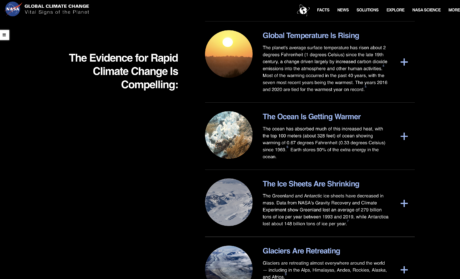Global warming and pollution
We live in a greenhouse
Solar radiation is the main source of energy on the Earth. About 50% of the radiation (mainly short wave radiation) reaching Earth’s atmosphere passes through the air and clouds to the surface, where it is absorbed and then radiated upward in the form of long-wave infrared heat. About 90 percent of this heat (long wave radiation from the earth) is then absorbed by the greenhouse gases like Carbon dioxide, Water vapor, Methane, Nitrous Oxide and radiated back toward the surface. This is how the Earth is warmed up to a life-supporting average of 15 degrees Celsius. This process is known as greenhouse effect. Greenhouse effect is necessary for the sustenance of life on earth. The problem is enhanced greenhouse effect caused by the increasing level of the greenhouse gases in the atmosphere mainly due to human activities.
What is enhanced greenhouse effect or global warming?
Is the progressive or intensified warming up of the earth and its atmosphere beyond a critical limit due to enhanced greenhouse effect that cannot be balanced out by the Earth’s natural balancing system (energy budget). It is happening because of the rising level of the greenhouse gases in the atmosphere mainly due to the burning of fossil fuels (coal, oil, gas), cutting down forests and other industrial and agricultural activities. Greenhouse gases like water vapour, carbon dioxide, Methane, nitrous oxide, chlorofluorocarbons etc. allow the shortwave radiation from the sun to pass through the atmosphere but trap a significant portion of the long wave radiation from the earth (blanketing effect).
Soil erosion and desertification
Soil erosion
Soils form the outermost layer of the earth’s surface, consisting of weathered micro rock particles, minerals, weathered bedrock (regolith), organic matter (both dead and alive), air and water. Soil is considered as the skin of the earth (W.B. Logan). The formation of a layer of 30cm soil may take between 1000 to 10000 years. Because of its very slow formation process, soil can be considered as non-renewable resource.
Soil erosion is the loss of soil quality and quantity involving physical, biological and chemical degradation processes. Physical degradation involves change in structure-permeability, porosity, change in texture that is sand, silt and clay content, erosion by climatic component such as water (surface runoff, overland flow, gully and rill erosion) and wind (bare topsoil due to deforestation). Biological degradation involves loss of humus and soil organism. Chemical degradation means change in soil pH and acidification, salinization, toxicity and declining overall fertility.
Desertification
Desertification is one of the most serious environmental consequences of soil degradation. It is the process where semi-arid environments change to become more desert-like as a result of natural and man-made activities like drought, deforestation, overgrazing and climate change. Every year an area twice the size of Belgium becomes dry and infertile. The Sahara desert in Africa is advancing southwards at a rate of 10 km per year. Sahel is one of the most affected ares under desertification.

